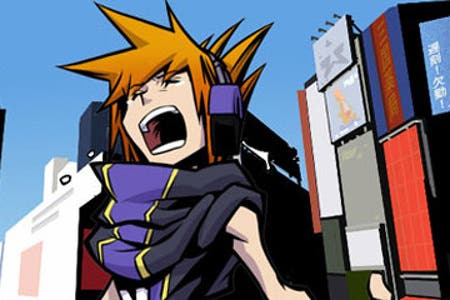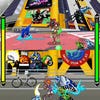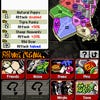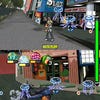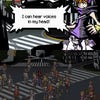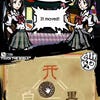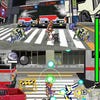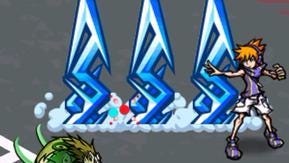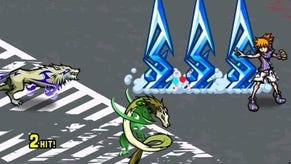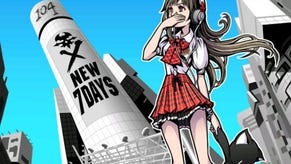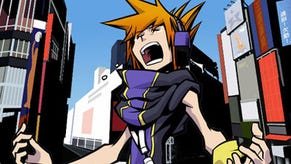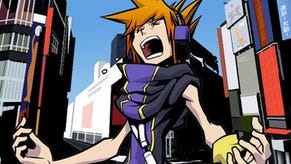Retrospective: The World Ends With You
It's a wonderful world.
Shooter. Racer. Fighter. Platformer. Farming simulator. Games, the grand majority of the time, are about actions. We run and jump and kill and collect. We conquer entire worlds - sometimes in the span of an afternoon - with their wondrous works of architecture and natural beauty flying by in a blur of blood, guts and glittering prizes.
It's a damn shame, too, because The World Ends With You demonstrated the immense potential in not creating a game about an action, but instead a place. It was in almost all ways - art style, soundtrack, equipment system, combat, storyline, characters, food items - a singing-from-the-mountaintops love letter to Tokyo's ultra-stylish Shibuya district. More importantly, though, TWEWY was intoxicatingly sincere in its admiration.
It's weird, too, because when TWEWY was first announced, I totally wasn't feeling it. In fact, I nearly pre-judged it to be the complete opposite of sincere. Tetsuya Nomura, infamous character designer on every major Final Fantasy of the past decade or so, consistently let his Shibuya-soaked sense of style seep into settings and stories where it totally didn't fit, so I was (perhaps unfairly) soured on the very notion of the place. I looked at TWEWY and saw the biggest excuse yet to rehash Nomura's typical selection of improbable outfits, hair tall and spiky enough to stab God in the eye, and - of course - zippers where zippers don't belong. I was fully prepared to write it off and continue on my way.
Instead, I picked it up on a whim and came to understand - on some level - why Shibuya is such a pervasive object of Japanese cultural affection. Yes, TWEWY obviously exaggerated Shibuya's defining features, but that was the point: rather than attempting to be a building-by-building recreation of the district, TWEWY squeezed the feeling of being there down into a tiny cluster of chunky pixels. It was all so overwhelmingly, uncompromisingly hip - in its sights, its sounds, and its decidedly rebellious (at least, as far as JRPGs go) attitude. And yet, the game's true brilliance revealed itself in just how much substance there was beneath it all.
Nearly every system tied together to make this fantastical vision of Shibuya seem effortlessly plausible. Neku Sakuraba and his colorful cast of 'Reapers' Game' contestants weren't lugging broadswords around a 21st century city or fishing suits of armor out of people's dressers. TWEWY traded falchions for fashion. Characters visited stores, befriended their owners, and stuffed their shopping bags with as many of the latest looks as possible.
And while new digs left character appearances sadly unchanged, TWEWY featured an entire system that fluctuated clothing brands' stat effects based on whether or not they were in style in certain areas. The end result kept players constantly cycling through their wardrobes (as opposed to most RPGs' simple upward min/max progression) and sold the image of Shibuya as a place where fashion is - in this case, literally - a life-and-death concern.
And yet, while littered with a greatest hits collection of Shibuya's most recognizable landmarks, TWEWY itself most resembled the world famous scramble crossing. The crowded crosswalk is, as you might imagine, an overwhelming jumble of people, cars, loudspeaker ads and profoundly overworked Starbucks employees. Similarly, TWEWY spent its first couple hours bombarding players with off-the-wall systems, cryptic plot teases, and an unending barrage of tutorial text. For all its focus on sleek style, TWEWY was not a particularly elegant game. Its opening hours, especially, proved far too loud and busy for their own good.
But then I suppose that's par for the course when you're basically teaching players to be their own co-op partner. In what was perhaps TWEWY's defining feature, busting bestial Noise monsters required control of the action on two screens at once. And while powers - which ranged from basic lightning and fire to a few based on Final Fantasy summons - came in the form of fashion pins, battle is the one place where Shibuya took a backseat. It was, once you got the hang of it, inventively chaotic fun, but it required unwavering focus on the task at hand. And other hand. And maybe even a foot, during some of the tougher fights.
But even with one sense almost entirely blinded, TWEWY's slavish devotion to style managed to latch onto another. Battles were rhythmic in the way they bounced back-and-forth between characters and attacks, and a pitch perfect soundtrack gave that feeling some location-appropriate flavor. Whether it was the absurdly catchy J-pop of Calling, hip-hop-influenced stuff like Twister, or the techno-beats of Long Dream, bouncy, genre-pushing music lent TWEWY an infectious energy. Which fit it like a pair of pretentiously large headphones, given that Shibuya is, after all, a lively, youth-driven culture.
And really, that energy and attitude seeped back into TWEWY's every pore. As such, this was a story where JRPGs' favorite go-to trope, Intrepid Band of Youths Intrepidly Bands Together to Save A Place, actually fit. More impressive still, it managed to touch on themes like alienation and rebellion without thoughtlessly glorifying them.
Sure, Neku was basically a wordier embodiment of Cloud's angst - but only up to a point. Slowly but surely, he found that other people were worthwhile after all. He actually matured over time. No, TWEWY wasn't some Pulitzer-worthy work of staggering genius (I dare you to not cringe every time Beat says anything), but its cast of characters ended up likeably optimistic - or, in some cases, even naive - during their darkest of hours.
And, for better or worse, a similar optimism manifested itself in TWEWY's, well, existence. While the majority of the JRPG space opted to cling desperately to decades-old standbys, Square Enix and Jupiter paved over the rust with a shiny, modern setting and some seriously off-the-wall ideas. Conventional wisdom declared that TWEWY was destined for a craterous flop. In the end, however, it turned into a modest commercial success and - in recent months - has managed to stir up sequel whispers. Honestly, though, can a sequel capture the same daring, uncompromisingly stylish spirit? Does it need to?
At this point, I have no idea. Without a doubt, though, the first (and so far, only) TWEWY was Shibuya through-and-through - in location, attitude, and ambition. So maybe we'll get a sequel, maybe we won't. Maybe it'll be terrible or uninspired or a farming simulator. But TWEWY is certainly capable of standing on its own two feet, so I hardly think it'll be the end of the world.
